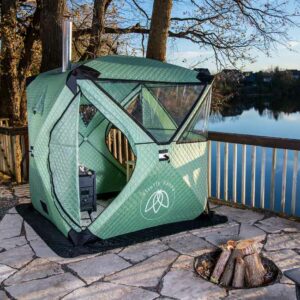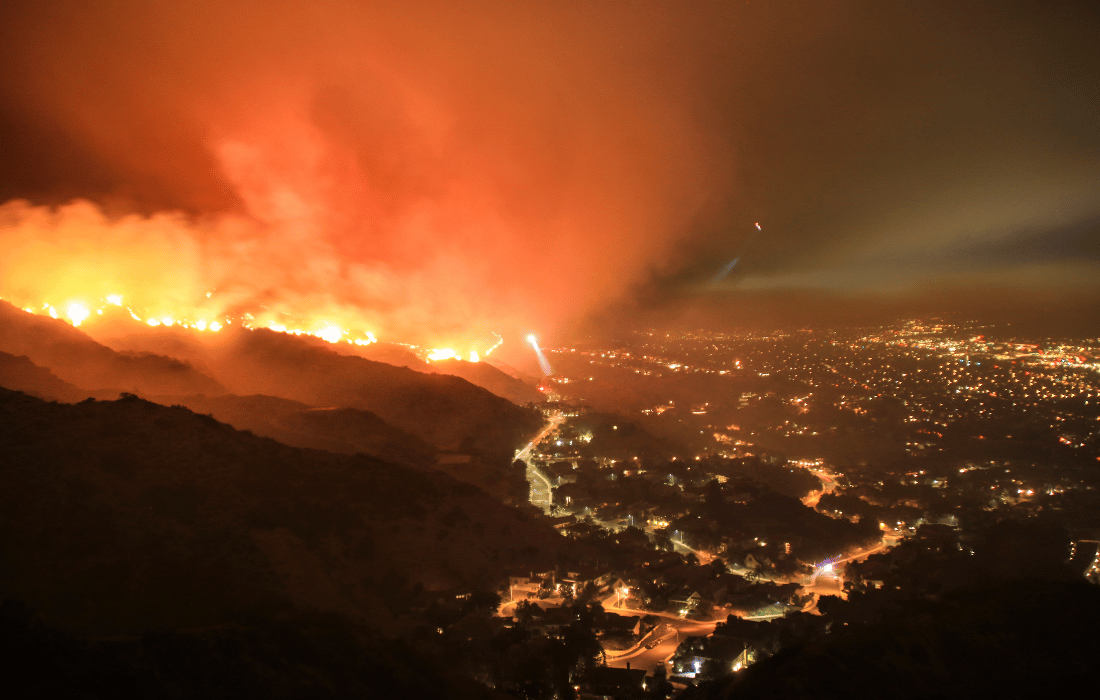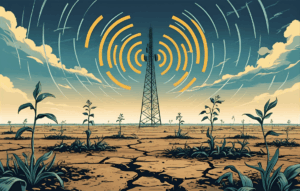While the wildfires devastating California are an annual occurrence that has grown more destructive and dangerous over time, the ones currently burning in the Los Angeles area are without a doubt some of the most devastating they have ever seen. This is not just about flames threatening homes; it’s about the air we breathe. Urban wildfires, unlike those in forests, create an especially hazardous environment due to the synthetic materials burned in homes, vehicles, and infrastructure. The air becomes saturated with toxic chemicals, heavy metals, and microscopic particulate matter. It’s not just smoke—it’s a health emergency.
This is a powerful reminder of why holistic health isn’t a luxury or a short-term fix but a 24/7 commitment. Building a resilient body that can weather unexpected challenges is critical for long-term vitality. In this article, we’ll explore why urban wildfire smoke is so dangerous and provide thorough strategies to protect yourself, your loved ones, and even your pets.
Understanding the Dangers of Urban Wildfire Smoke
Wildfire smoke is more than an irritant. It’s a complex mixture of gases and fine particles that can wreak havoc on the body. While all wildfire smoke poses risks, urban wildfires bring a new level of toxicity due to the materials being burned.
When structures, vehicles, and household items combust, they release dangerous substances into the air. PM2.5, tiny particles smaller than 2.5 micrometers, is a major concern. These particles are small enough to bypass the body’s natural defenses, travel deep into the lungs, and even enter the bloodstream. Once there, they can travel to other organs and cause widespread damage.
Urban wildfires also release volatile organic compounds (VOCs) from burning plastics, paints, and household chemicals. Heavy metals like lead, mercury, and cadmium are released when electronics, vehicles, and building materials burn, leading to serious neurological and cardiovascular health problems. Dioxins and furans, which are highly carcinogenic byproducts of burning plastics and treated wood, add another layer of toxicity.
Short-term exposure to wildfire smoke can cause coughing, sneezing, irritated eyes, chest tightness, and fatigue. For people with preexisting conditions such as asthma, COPD, or heart disease, the risks are even greater, leading to acute events like asthma attacks, heart attacks, or strokes. Emerging research reveals that repeated exposure to PM2.5 and toxic wildfire pollutants can have long-term effects, including dementia, Alzheimer’s, lung and brain cancer, and preterm birth.
Even healthy individuals aren’t spared. Studies have shown that healthy volunteers exposed to wildfire smoke experience elevated levels of inflammatory markers in their blood. Pets are also vulnerable, suffering from respiratory and immune system issues. The message is clear: wildfire smoke isn’t just a temporary nuisance—it’s a long-term health threat.
Tactical Tools to Protect Your Health
1. Monitor Air Quality
Start by understanding the air you’re breathing. Air quality monitoring tools are essential for making informed decisions about your daily activities. AirNow provides real-time air quality data and health advisories, offering a reliable way to check air conditions in your area. PurpleAir offers hyper-localized air quality data with detailed PM2.5 levels, making it especially useful for monitoring air conditions around your home or workplace. Use AQI apps like Plume Labs or AirVisual to get notifications and track changes in air quality throughout the day. If the AQI is above 150, it’s considered unhealthy, and outdoor activities should be minimized. Sensitive groups, including children, pregnant women, and the elderly, should take extra precautions when levels exceed 100.
2. Create a Clean Air Environment
 Your home should be your sanctuary during wildfire events. Seal all windows, doors, and other gaps using weatherstripping, caulk, or even wet towels to prevent smoke from entering. Invest in high-quality air purifiers such as AirDoctor, which use HEPA filters to capture fine particulates and activated carbon filters to neutralize harmful gases and VOCs. Place air purifiers in your bedroom, living room, and any room where you spend significant time. Avoid activities that degrade indoor air quality, such as vacuuming without a HEPA filter, frying foods, or burning candles.
Your home should be your sanctuary during wildfire events. Seal all windows, doors, and other gaps using weatherstripping, caulk, or even wet towels to prevent smoke from entering. Invest in high-quality air purifiers such as AirDoctor, which use HEPA filters to capture fine particulates and activated carbon filters to neutralize harmful gases and VOCs. Place air purifiers in your bedroom, living room, and any room where you spend significant time. Avoid activities that degrade indoor air quality, such as vacuuming without a HEPA filter, frying foods, or burning candles.
3. Wear Protective Masks If Needed
Masks have been a controversial public topic since 2020, and I never imagined I’d find myself recommending one, but when it comes to protecting against the toxins released by urban wildfire smoke, they are simply essential. N95 or P100 respirators filter out 95–100% of fine particulates, including PM2.5. Ensure they fit snugly around your nose and mouth to prevent leaks. Since N95 masks don’t come in children’s sizes, choose well-fitted KN95 masks for older children. For toddlers, consult pediatric guidelines on protective options. Replace masks as needed, especially if they become damp or soiled, and store them in a clean, dry place when not in use.
4. Support Detoxification
Wildfire smoke introduces toxins that can overwhelm your body’s natural detoxification pathways. Enhancing these systems is crucial to minimizing damage and supporting recovery. Here are some highly effective tools to help your body detoxify:
Binders for Toxin Removal: Supplements like chlorella, spirulina, and activated charcoal bind to toxins in the gut and facilitate their elimination. These are particularly effective for capturing heavy metals and other harmful substances introduced by smoke exposure. For best results, take binders on an empty stomach, away from other supplements or medications.
Liver-Supportive Foods: Incorporate foods known to enhance liver detoxification, such as garlic, cilantro, parsley, and cruciferous vegetables like broccoli, kale, and cauliflower. These nutrient-dense foods contain compounds that help the liver neutralize and excrete harmful toxins. Cilantro, for example, is particularly effective at binding to heavy metals and aiding in their removal from the body. Warning: do NOT use cilantro as a detoxification method without the use of chlorella or spirulina. This can be dangerous, as it can pull heavy metals into your bloodstream without a binding agent to remove them from your body.

Use code “tothemoon” to save $200 on a Firefly sauna tent Sweat It Out: Sweating is one of the body’s most effective mechanisms for eliminating toxins, including those absorbed from wildfire smoke. Regular sauna sessions are a highly beneficial way to enhance this process. Begin with shorter sessions of 15-20 minutes and gradually increase your duration as your body adjusts. Always hydrate before and after using a sauna to replenish fluids and electrolytes lost through sweat.
Detox Baths: Regular baths with Epsom salts or bentonite clay can help draw out toxins through the skin while also providing relaxation and stress relief. Epsom salts supply magnesium, which supports enzymatic processes involved in detoxification, while bentonite clay has powerful binding properties to pull impurities from the body.
5. Optimize Respiratory Health
Your lungs are your frontline defense against wildfire smoke. Steam inhalation infused with essential oils like eucalyptus or peppermint will open the airways and soothe irritation. This is especially helpful for clearing mucus and easing chest tightness. Saline nasal sprays or rinses can flush out particulates and reduce inflammation in your nasal passages. Breathing exercises, such as diaphragmatic or box breathing, can strengthen your lungs and improve resilience over time.
Nebulizing is a specialized approach to addressing toxins in the respiratory system. It delivers therapeutic solutions directly to the lungs, helping to soothe irritation and neutralize toxins from smoke exposure.
Food-Grade Hydrogen Peroxide: Properly diluted hydrogen peroxide can help break down harmful substances in the lungs. Always follow safety protocols and consult with a healthcare professional for guidance before using this method.
Colloidal Silver: This solution can support respiratory health and combat potential pathogens introduced by smoke. Ensure that you use high-quality colloidal silver and follow recommended usage guidelines.
Nebulizing requires proper equipment, such as a high-quality nebulizer, and precise preparation of solutions to avoid complications. This method is highly effective for those looking to target lung health directly.
6. Hydrate and Nourish

Smoke exposure dehydrates the body and increases oxidative stress. Proper hydration and nutrition are critical for maintaining your body’s defenses. Drink at least 8–10 glasses of water daily and add electrolytes or trace minerals to replenish nutrients lost due to stress and perspiration. Consume hydrating foods like cucumbers, watermelon, and celery to support hydration. Include antioxidant-rich foods such as oranges, bell peppers, blueberries, and green tea in your diet to combat oxidative stress.
Take supplements like vitamin C for maximum absorption, as this form bypasses the digestive system and delivers higher concentrations directly to your cells. Use N-Acetylcysteine (NAC) to boost glutathione production, a powerful antioxidant that protects lung tissue. Zinc and magnesium are also crucial for cellular repair and immune function during high-stress periods.
7. Prioritize Recovery and Sleep
Your body repairs itself during sleep, making it essential for recovery from environmental stressors. Create a relaxing sleep environment by using blackout curtains to eliminate light pollution and investing in products like blue light blocking glasses and EMF protection devices. Maintain a consistent sleep schedule to support your body’s circadian rhythm and recovery processes.
8. Be Prepared for Future Events
Preparation is key to minimizing exposure during wildfire season. Build an emergency kit with essentials such as N95 masks, portable air purifiers, electrolyte packets, detox supplements, and a flashlight. Proactive health habits, like regular exercise, a nutrient-dense diet, and regular detoxification, build the resilience needed to handle unexpected challenges. Sign up for local air quality alerts and wildfire updates to stay ahead of potential risks.
Conclusion: Resilience Starts Now
The fires in California are a wake-up call to take our health seriously—not just in the face of immediate crises but every day. The strategies outlined here are essential for mitigating the risks of wildfire smoke exposure, but they also underscore the importance of year-round commitment to holistic health. By strengthening your body’s defenses, optimizing your environment, and staying informed, you can navigate these challenges with confidence. Health is your greatest asset, and protecting it is a proactive endeavor that pays dividends for a lifetime. Stay safe, stay prepared, and take charge of your health today.













